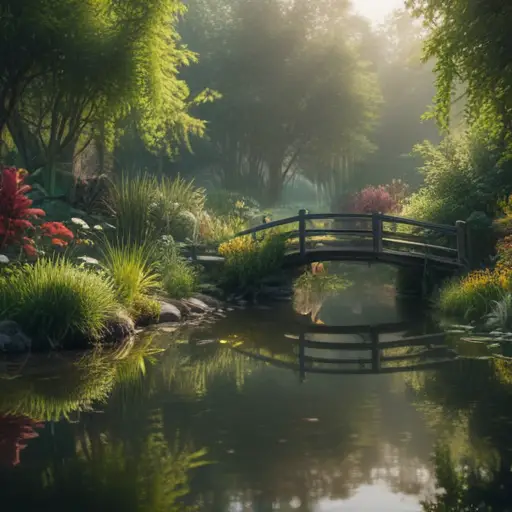Creating a Beautiful Garden Pond in Your Backyard
Planning and Designing Your Pond
Planning and designing your pond can be a fun and exciting project, but it can also be a bit overwhelming. First, you’ll need to decide on the size and shape of your pond. Do you want a small, cozy pond tucked away in a corner of your garden, or a grand, sprawling pond that takes center stage? Next, consider the location of your pond. Make sure it gets enough sunlight for your plants to thrive, but also enough shade to prevent algae from taking over. And don’t forget about the wildlife – frogs, birds, and even the occasional raccoon might stop by for a visit. So, grab your shovel and get ready to dig – your pond awaits!
Choosing the Right Location
One interesting fact about building a garden pond is that incorporating different levels of depth can help create a more diverse ecosystem. By including shallow areas, deep areas, and sloping edges, you can provide habitats for a variety of plants and animals, from water lilies and frogs to fish and insects. This can help promote biodiversity and create a more balanced and sustainable pond environment.
Choosing the right location for your garden pond is crucial for its success. Consider factors such as sunlight exposure, proximity to trees (which can drop leaves and debris into the water), and accessibility for maintenance. You’ll want to avoid placing your pond directly under a tree that sheds a lot of leaves, unless you enjoy spending your weekends fishing them out with a net. Also, think about the view from your home – a pond placed strategically can enhance your garden’s overall aesthetic. So, take a stroll around your yard, envisioning the perfect spot for your pond, and get ready to create a tranquil oasis right in your own backyard.
Building the Pond Structure

Building the pond structure is where the real fun begins in creating your garden oasis. Start by outlining the shape of your pond with a garden hose or spray paint. Once you have your design in place, it’s time to start digging. Make sure to dig the pond to the desired depth, keeping in mind the depth requirements for any aquatic plants or fish you plan to add. You may want to consider adding shelves or ledges at different depths to provide a variety of habitats for your pond life. And don’t forget to slope the sides of the pond to prevent soil erosion and make it easier for critters to enter and exit the water.
After you’ve dug out the pond, it’s time to line it with a durable pond liner. Make sure to choose a high-quality liner that is resistant to punctures and UV rays. Carefully lay the liner in the hole, smoothing out any wrinkles or folds as you go. You may want to add a layer of sand or underlayment beneath the liner to protect it from sharp objects or roots that could puncture it. Once the liner is in place, fill the pond with water and adjust the liner as needed to ensure a snug fit.
Next, it’s time to add the finishing touches to your pond structure. Consider adding rocks, stones, or bricks around the edge of the pond to create a natural border and provide a place for wildlife to bask in the sun. You can also add aquatic plants, such as water lilies or cattails, to add beauty and provide habitat for fish and other pond creatures. And don’t forget to install a pump and filter system to keep the water clean and circulating, ensuring a healthy environment for your pond inhabitants.
As you put the final touches on your pond structure, take a moment to admire your handiwork. Building a garden pond is a labor of love, but the end result is well worth the effort. Whether you’re relaxing by the water’s edge, watching the fish swim lazily by, or listening to the soothing sound of a waterfall, your pond will quickly become the focal point of your garden. So grab a cold drink, kick back, and enjoy the serene beauty of your very own backyard oasis.
Adding Plants and Fish
Did you know that adding a variety of aquatic plants to your garden pond can help to naturally filter the water and keep it clean? Plants like water lilies, water hyacinth, and water lettuce not only add beauty to your pond, but also help to maintain a healthy ecosystem for fish and other wildlife.
Adding plants and fish to your garden pond is the final step in creating a thriving ecosystem. When selecting plants, consider a mix of submerged, floating, and marginal plants to provide oxygen, shade, and filtration. Water lilies, lotus, and water lettuce are popular choices that add beauty and help maintain water quality. When it comes to fish, koi and goldfish are common options that add color and movement to the pond. Remember to acclimate your fish to the water temperature before releasing them and provide adequate shelter and hiding spots to keep them safe from predators. With the right balance of plants and fish, your garden pond will be a vibrant and dynamic addition to your outdoor space.







